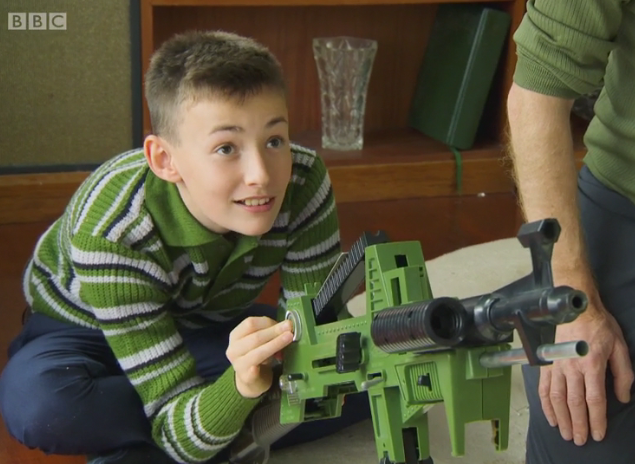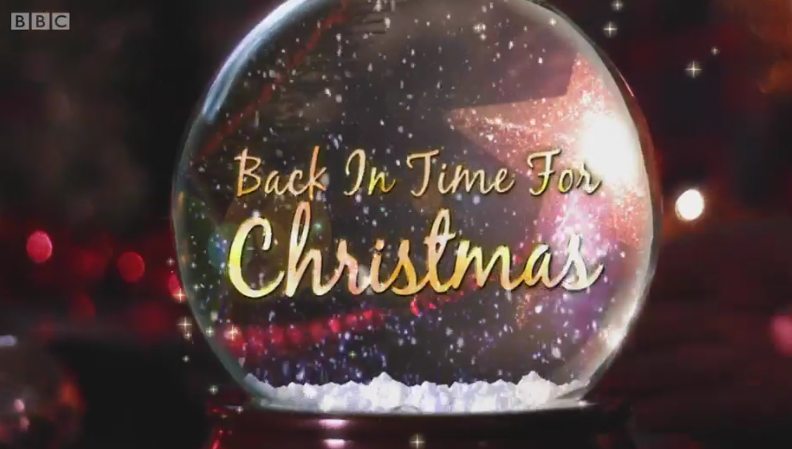
I’ve never felt the need to keep up with the Kardashians, the Osbournes or even the Windsors, but Back in Time for Christmas was a timely reminder that the Robshaws are now the first family of reality TV.
Earlier this year, the Robshaws from East London – Brandon, Rochelle and their three kids – starred in Back in Time for Dinner, another of those prime-time shows in which the pampered citizens of 21st-century Britain time-travel back to the primitive conditions experienced by their ancestors. As viewers watched them “shop, cook and eat” their way through five decades, the plucky Robshaws had to endure the rigours of life without fridges, microwaves or ring-pull cans.
Unlike the BBC’s gadget-centric experiment Electric Dreams, the emphasis here was on how changing social conditions have affected how families eat and where they shop. Mind you, watching Rochelle labouring over a primitive stove or trying to liberate some pesky pilchards from a can did show how technology has freed women from some aspects of domestic drudgery.
It was fun watching this telegenic “food-loving family” chomp their way through a Smörgåsbord of treats – cold liver in the 50s, Smash and Pot Noodles in the 70s – even if it did come with regular interruptions from know-it-all presenter Giles Coren. Putting a Yuletide spin on the combination of yucky food, nostalgia and forays into social history worked well in this two-part follow-up, which took us from the austerity of the 1940s to the have-it-all excesses of the 80s and 90s.
As in the first series the Robshaws quickly reverted to type, with dad Brandon as cheerful about missing Christmas lunch in the 40s to perform Home Guard duties as he was about watching Christmas Day football in the 50s. (The 40s lunch consisted of roasted ox heart with minimal trimmings, so eating his tin hat would have been an attractive alternative.) Rochelle Robshaw wears a perpetual frown, though perhaps she has as much trouble as I do distinguishing between her lookalike daughters, Miranda and Ros.
Unhampered by political correctness, 11-year-old Fred Robshaw enjoys stuffing himself with sweets and chocolates as he unwraps each decade’s must-have toys. The Johnny Seven “7 guns in 1” weapons system he got in the 60s left dad Brandon almost speechless with excitement, but I was disappointed that Action Man didn’t make an appearance here or in the 70s segment.
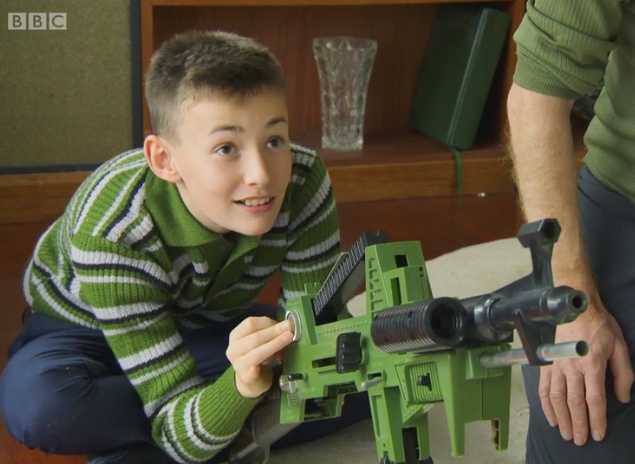
The history element here seemed well-worn, especially if you’ve seen other recent BBC documentaries harping on about power cuts and industrial unrest in the 70s and the “greed is good” ethos of the 80s. I was surprised to learn that football matches used to be played on Christmas Day rather than Boxing Day, and that you could get to the ground by public transport. But I don’t remember my family embracing the Thatcherite decade by chucking out the holly and decking the halls with all-blue tinsel and baubles.
I’m a fan of mid-century design, so what excited me most about Back in Time for Christmas wasn’t Slade’s 1973 Christmas Number One or the Spice Girls advent calendar from the 90s. No, it was the sight of that 1960s Christmas dinner (complete with fresh turkey) being served on lovely Midwinter Sienna tableware that made my mouth water.
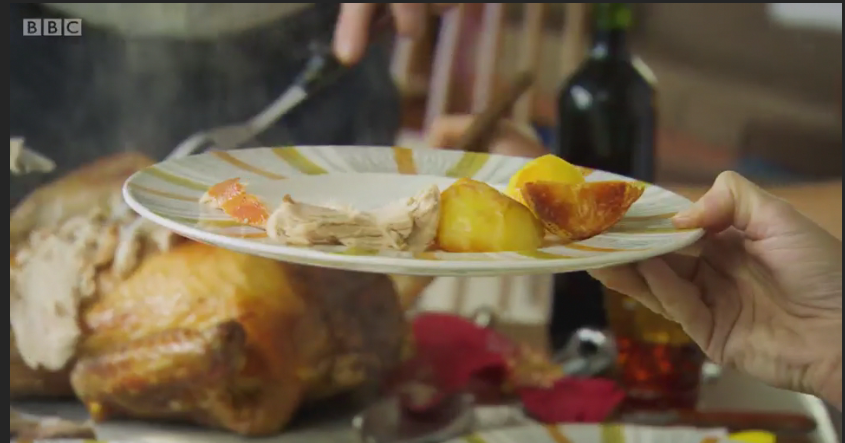
In the preceding decade, the Robshaws’ 1950s lounge was decorated with Sanderson Mobiles wallpaper, in the yellow and red colourway. (I have some slate blue cushions in the same pattern.) Aesthetically it was all downhill after that, as the kids browsed the new Argos catalogue on their horrible swirly patterned sofa in the 70s.
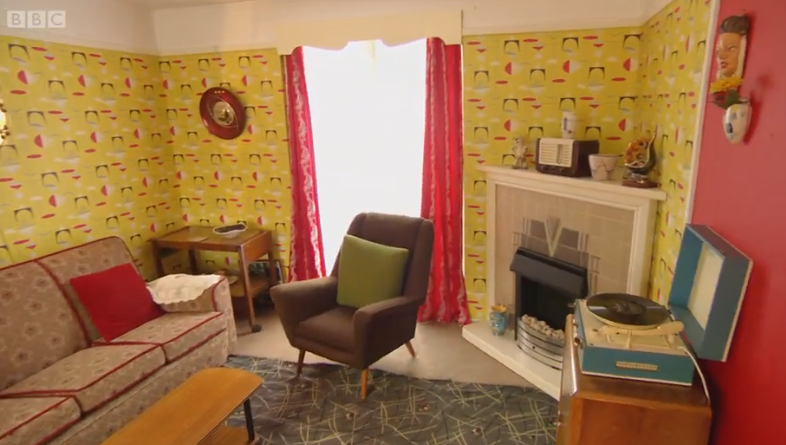
Despite the stomach-churning excesses of Spam-on-a-stick hors d’oeuvres and that kiwi fruit-laden trifle, the Robshaws search for a “perfect family Christmas” proved to be the perfect appetiser for the festive period. I hope there will be another spin-off, in which Miranda and Ros get to experiment with student food through the decades.

